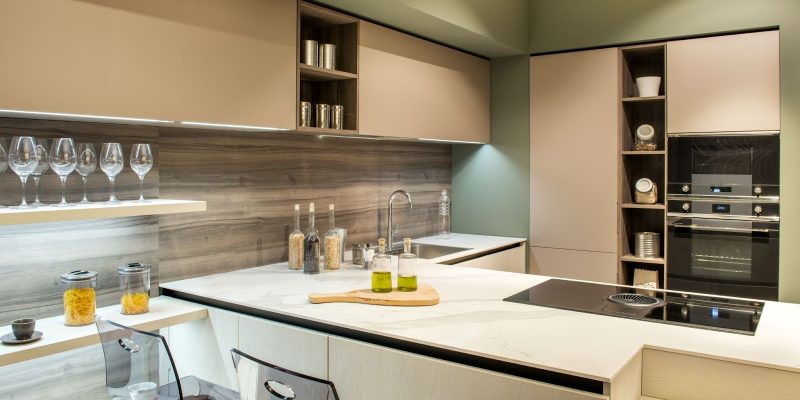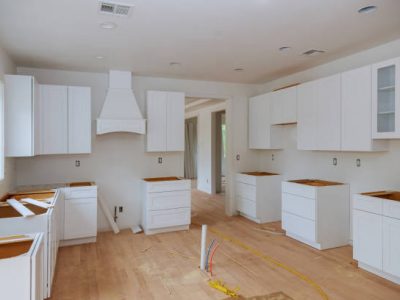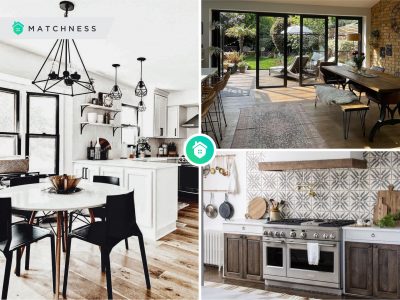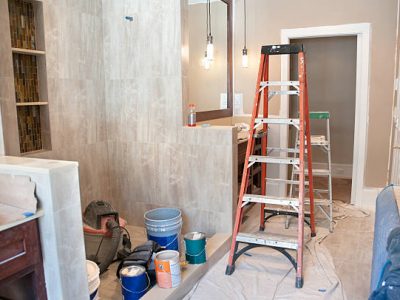Definition of Kitchen Renovation
A kitchen renovation is a broad term that encompasses a range of updates and alterations to improve the function, aesthetic, and value of your kitchen. It can involve simple changes, such as repainting the walls and replacing the countertops, or more extensive modifications like restructuring the layout and installing new appliances.
Embarking on a kitchen renovation not only brings a breath of fresh air to your space but also potentially increases the home value, offering a significant return on investment.
The Importance of Planning
Before diving into the renovation process, it’s imperative to understand that a well-laid plan is the cornerstone of a successful project. Planning aids in streamlining the process, saving both time and money.
It helps in foreseeing potential pitfalls and finding ways to circumvent them before they become substantial issues. More importantly, a comprehensive plan ensures that the renovated kitchen meets your expectations and adheres to the set budget.
Step 1: Inspiration and Research
Inspiration
The first step in your kitchen renovation journey should involve gathering inspiration. In this digital age, platforms such as Pinterest, Instagram, and home renovation blogs can be great sources to explore different styles, layouts, and color schemes.
Besides digital platforms, you can also flip through home improvement magazines and catalogs to find designs that resonate with you. Take your time to compile a vision board that embodies all the elements you desire in your dream kitchen.
This vision board will be a guiding tool as you make decisions throughout the renovation process.
Research
Once you have a well-rounded vision, it’s time to deep-dive into research. Start by understanding the current trends in kitchen designs. Are open shelves the rage, or are people gravitating towards a minimalist design?
Understanding these trends will help in carving a space that is both modern and in tune with your personal style.
Research doesn’t stop with trends; it extends to potential materials and appliances. Delve into the pros and cons of different countertop materials, flooring options, and cabinetry styles.
Consider aspects like durability, maintenance, and cost while making your choices. Also, look into the specifications, reviews, and energy efficiency of the appliances you intend to install.
Step 2: Budgeting
Setting a Budget
A well-thought-out budget is a linchpin in your kitchen renovation project. Start by determining a reasonable budget that encompasses all the essential aspects of the renovation.
To set a realistic budget, list down all the tasks involved and allocate a financial estimate to each based on your research. Remember, the budget should align with your financial capacity while also fulfilling your desires for the renovated space.
Contingency Fund
Despite meticulous planning, renovations can sometimes unearth unexpected issues like plumbing problems or electrical faults. Hence, it is wise to set aside a contingency fund, ideally 10-20% of the total budget, to cover unforeseen expenses.
This fund ensures that your renovation project doesn’t stall due to financial hiccups, keeping the momentum steady.
Step 3: Hiring Professionals
Finding the Right Contractor
Your contractor will be the maestro orchestrating your kitchen renovation, hence choosing the right one is crucial. Start by seeking recommendations from friends or family who have recently renovated their homes.
Once you have a list, vet potential contractors by checking their credentials, past work, and customer reviews. Don’t hesitate to ask for references and ensure that they are insured and licensed to avoid future complications.
Remember, a good contractor will not only bring your vision to life but will also guide you through the process, making it seamless and stress-free.
Designers and Architects
While a contractor can oversee the project, a designer or an architect can help in refining your vision and bringing technical expertise to the table. If your renovation involves structural changes or a complete overhaul of the existing layout, hiring an architect becomes almost indispensable.
Similarly, a designer can assist in choosing the right color palettes, materials, and layouts, enhancing the aesthetic and functional quotient of your kitchen.
While hiring professionals involves an additional cost, their expertise can indeed be a worthy investment, saving you from costly mistakes and ensuring a result that is both beautiful and functional.
Step 4: Design and Layout
Space Planning
Designing the layout is perhaps the most exhilarating part of a kitchen renovation, where you get to design a space that’s both functional and aesthetically pleasing.
Begin with space planning, which involves optimizing the kitchen layout to enhance functionality and flow. Consider the ‘work triangle’ concept, which focuses on creating a triangular workflow between the stove, refrigerator, and sink, facilitating easy movement and a streamlined cooking process.
Choosing a Design Style
With the functional layout set, shift your focus to the aesthetic aspects. Start by choosing a design style that resonates with you.
Whether it’s the clean lines of modern design, the warmth of traditional style, or the rustic charm of a farmhouse kitchen, the options are endless. Ensure the chosen style blends harmoniously with the rest of your home to create a cohesive look.
In this step, dive deep into the color palettes, textures, and materials that will define your kitchen’s personality. Remember, the kitchen is the heart of the home; thus, it should mirror your style while promising warmth and hospitality.
Step 5: Material and Appliance Selection
Material Selection
The choice of materials will significantly influence the look and functionality of your kitchen. Dive into the diverse world of materials available for countertops, flooring, and cabinetry.
- Countertops: Materials like granite, quartz, and marble come with their own set of benefits and aesthetic appeal. Consider factors such as durability, maintenance, and harmony with your chosen design style when making a selection.
- Flooring: Flooring options range from hardwood and tile to laminate and vinyl. Each option offers different benefits in terms of durability, maintenance, and visual appeal.
- Cabinetry: The cabinetry defines a considerable part of your kitchen’s visual appeal. Whether you choose solid wood, plywood, or MDF, ensure it aligns with your design style and budget.
Appliance Selection
Next, we move on to the appliances, the workhorses of your kitchen. The market is flooded with a plethora of options, each promising something unique.
- Energy-Efficiency: Opt for appliances that offer energy efficiency to ensure lower utility bills and a smaller carbon footprint.
- Integration: Consider appliances that can be integrated into your cabinetry for a sleek and modern look.
- Smart Appliances: If you are a tech-savvy individual, explore smart appliances that offer connectivity and can be controlled via smartphone apps, bringing convenience to your fingertips.
Material and appliance selection is a critical step, laying down the building blocks for your new kitchen, promising both functionality and style.
Step 6: Permits and Regulations
Permit Acquisition
Acquiring the necessary permits is a crucial step in your renovation journey. Depending on the scale and complexity of your project, various permits might be required, including building, electrical, and plumbing permits. Make it a point to consult with your contractor or local authorities to understand the kind of permits you need. Acquiring them not only ensures the legality of your renovation but also safeguards you against potential fines and complications in the future.
Adhering to Regulations
Apart from permits, it’s vital to adhere to local regulations and standards that govern home renovations. These might pertain to safety standards, zoning regulations, or neighborhood guidelines.
Staying compliant with these regulations ensures a smooth renovation process and a home that is safe and up to code.
Understanding and adhering to permits and regulations might seem like a bureaucratic hurdle, but it is a necessary step to ensure a smooth and legally compliant renovation process.
Step 7: Demolition and Construction
Preparing for Demolition
As you stand on the threshold of seeing your dream kitchen taking shape, the first step is demolition. This phase involves the removal of old cabinetry, flooring, and other elements to make way for the new design.
Before embarking on this, ensure that you have taken safety measures including securing the area to prevent accidents and creating a temporary kitchen setup to facilitate daily needs. It is prudent to remove any valuable or fragile items from nearby rooms to protect them from dust and debris.
Construction Phase
Following the demolition, the construction phase kicks off, where your chosen designs and plans start coming to life.
This phase is a dynamic period involving various tasks such as plumbing, electrical work, installing new cabinetry, and laying down the flooring.
- Timeline: Discuss a realistic timeline with your contractor, understanding that delays can occur due to unforeseen challenges.
- Site Visits: Regular site visits will allow you to monitor the progress and ensure that the work aligns with your vision.
- Flexibility: Maintain a flexible attitude, ready to make swift decisions if sudden issues or opportunities for enhancement arise.
The demolition and construction phase is a transformative period, witnessing the metamorphosis of your kitchen from the old to the new, a step closer to your dream kitchen.
Step 8: Inspection and Quality Control
Inspection
Once the construction phase concludes, it is time for the inspection process to ascertain that all the renovations adhere to the stipulated standards and regulations.
This step might involve local authorities or independent inspectors scrutinizing the work for adherence to safety codes and other regulations. It is prudent to work closely with your contractor to ensure that all the work meets the necessary standards, avoiding any hitches during the inspection process.
Quality Control
Beyond official inspections, quality control is about ensuring the work meets your personal standards and expectations.
- Walk-Through: Conduct a detailed walk-through with your contractor, noting any issues or areas that require finishing touches.
- Feedback: Provide feedback on any areas that do not meet your expectations and discuss potential solutions.
- Snag List: Create a ‘snag list’ of small issues or imperfections to be addressed, ensuring nothing is overlooked.
Quality control is your opportunity to ensure that every detail aligns with your vision, promising a result that brings satisfaction and pride.
Conclusion
Recap
In this comprehensive guide, we’ve walked you through the intricate journey of a kitchen renovation. From the initial spark of inspiration to the meticulous planning, from budgeting to hiring the right professionals, we’ve covered it all.
You’ve learned the importance of setting a budget, gathering inspiration, and conducting thorough research. We emphasized the significance of hiring the right contractor, designer, or architect and delved into the nuances of design, material selection, and appliance choices.
You’ve also gained insights into permits and regulations, demolition, construction, inspection, and quality control.
Final Thoughts
A well-executed kitchen renovation not only transforms your space but also enhances your daily life. It becomes the heart of your home, where you cook, dine, and create memories.
As you embark on this journey, remember to enjoy the process. Keep a positive attitude and an open line of communication with your contractors and designers. Be prepared for the unexpected, but also relish the exciting transformations that will soon take shape.
With this guide, you are well-equipped to navigate your kitchen renovation successfully. Whether you’re looking to boost the value of your home or simply create a more functional and beautiful kitchen, thoughtful planning and execution will ensure a satisfying result.




















